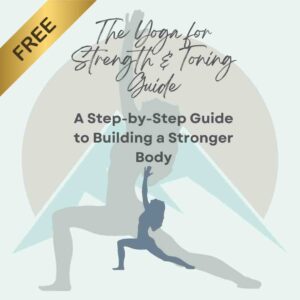As published in the Fall 2016 Issue of Forward in Flight magazine
Years ago, I had the opportunity to listen to a speech given by Red Bull Air Race competitor and aerobatic champion Mike Goulian. This wasn’t a talk about aerobatics or airplanes or even about aviation in general. He really spoke more about what it takes to be successful in whatever it is that you choose to do with your life. Ever since I heard him speak, I’ve really taken a few of the things he said with me on my own path in life.

One of the things he said was that his “off-season” is anything but an off-season. He is working every day to improve his skills, his performance, and mindset. He spoke about how he takes care of himself through eating right, exercising daily, and getting enough sleep. This really resonated with me since it took me a long time to figure out this exact thing. If I take care of myself, eat right, exercise, and get enough sleep, I will be way more productive in the things I want to get done every day.
Now, it’s important to understand that I am not a physician or a personal trainer. I am just an individual person who has read books, tried things out, failed at many things, and have succeeded with others. Everyone’s starting point is a different point and it’s important to understand that. I constantly receive questions from people asking how to get started with or improve upon their fitness.
My message is a bit different from other fitness role models you see out there: you don’t need to be a personal trainer, gym owner, or fitness professional to maintain a high-level of fitness. I am an every day person who has a 9-5 desk job who loves aviation and staying active. After having a conversation with a fellow pilot who did not understand the relationship between G load tolerance and physical fitness, he asked what I thought he could do to start to improve this area of his life. Again, I reiterated that I am not a health and fitness professional but here are some things that I do that work well for me. I also made a few posts in some Facebook groups asking other pilots what they do to keep themselves in shape either while traveling or for competitive aerobatics.
Fitness for Pilots
Here’s a few suggestions that I’ve put together from my own daily routine as well as several airline pilots, aerobatic pilots, flight instructors, and private pilots. Thank you to everyone who has responded to my request and I am glad to share them here. You’ll need to check with your physician before starting any new exercises and work closely with him/her to monitor you progress.
First, find some method of tracking your daily activity. I used to use the health app that just came standard with my phone. It measures daily steps, number of floors climbed, stress level and more. It was ok for me at first, but it really required that I carry my phone with me everywhere I go. I try really hard not to be that person who can’t survive without her phone so it really wasn’t all that accurate for me. There are days I just leave my phone on my desk and go about my day so I never had a true picture of what my activity actually was. I ended up winning a FitBit HR in a fitness challenge at work which ended up being a better option for me. I just wear it on my wrist and don’t think about it. At first I thought it was going to be a great way to track steps and heart rate each day, but really what I found more useful was tracking how much sleep I get each night!

It seems to me like we are in an age where we like to brag about how little sleep we get each night yet are still highly productive. I am sure there are many people who can truly survive on 4-5 hours a night, but I am not one of them! I know that if I get 7.5 hour of sleep each night, I will usually have a highly productive day the next day. My FitBit makes it pretty easy for me to track and it keeps it in my mind how important getting a restful night’s sleep truly is.
Try to get some form of activity in every single day, even if it’s just 20 minutes. If you haven’t been doing much, 20 minutes may seem like a lot. If that’s too much drop it down to where you need to be. This can be anything from walking your dog, going for a short bike ride, or even just taking the stairs rather than the elevator/escalator. For some reason I seem to notice this more in airports than anywhere else – people cramming on escalators and the stairs right next to them are empty. Sure, some of us are carrying around some hefty luggage. But if you’re not, why not take the stairs?
If you are able to, ride your bicycle to the airport. I know many people who have chosen their homes based on their close proximity to the airport. Rather than driving, try riding your bike. Throw your flight gear in a backpack and head out! Biking always seems to look so easy (to me anyways) but when I get on mine and start pedaling, I am quickly reminded how great of a workout it is! You want to make sure you have a properly fitted helmet, wear highly-visible clothes, and know your local traffic laws.
Now I haven’t tried this app out yet, but the Sworkit app was one that was recommended over and over by pilots who have overnight travel. Their motto on the website is “Anywhere, Anytime, Personalized”. You can chose from over 20 pre-built workouts or create your own. I like this idea because you don’t need to do the same couple of workouts over and over again but you also don’t want to do something that your body is just not ready for yet. I plan to give this app a shot since so many people recommended it while traveling.
Overall strength training is important for G load tolerance. Several people responded to my posts that as aerobatic pilots, strength is crucial to their performance. Strength training is probably my favorite way of keeping up my own fitness as well. One woman replied that she needs to keep her shoulders and calves nice and strong to stay in “stick and rudder shape.” I think this is the best way to sum up the importance of physical fitness for flying aerobatics!
There are so many ways you can build up your physical strength. I think probably the first method that comes to most people’s minds is lifting weights. Sure, that’s an awesome way to improve strength but what if you don’t have access to weights? Yoga and pilates aren’t generally considered strength exercises but many of the poses require a great deal of strength. Most cities have yoga or pilates studios where you can go learn how to properly do the poses before venturing out on your own. I highly suggest working with someone first so that you don’t hurt yourself. There are many services like Yoga Download and Hulu that have yoga classes available on demand.
Bodyweight exercises are another way to start to build your strength. You can do a functional workout consisting of pushups, situps, lunges, squats, jumping jacks, and planks. These are just a few examples of exercises that you can do if you don’t have access to a gym. I do a 45 minute functional workout in my backyard that requires zero equipment. When I am done, I am a sweaty mess!
These are just a few ideas for staying in shape for flight, regardless of the type of flying you do. With the help of trained professionals, you can figure out what works best for you, your lifestyle, your overall goals, and your starting point. I’d love to hear more about what you do to keep in shape!







You must be logged in to post a comment.